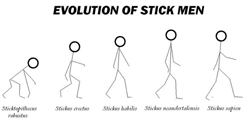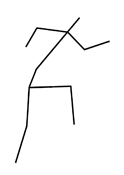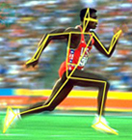Modeling Techniques
 In 1976, Dr. Ralph Mann completed his studies for his Ph.D. in Biomechanics by
submitting his dissertation titled “A Comprehensive Computer Technique to
Process Human Motion Data”. Using a common jumping action, the technique was
designed to maximize the motion by estimating the potential maximum human effort
possible, then predicting the simulated result.
In 1976, Dr. Ralph Mann completed his studies for his Ph.D. in Biomechanics by
submitting his dissertation titled “A Comprehensive Computer Technique to
Process Human Motion Data”. Using a common jumping action, the technique was
designed to maximize the motion by estimating the potential maximum human effort
possible, then predicting the simulated result.
The process worked so well that Dr. Mann continued to develop the technique when
he became the director of the biomechanics program at the University of
Kentucky. Since the core of the technique required information on maximum human
performance, he began using elite athletes in each of the major sports to
determine these values. The process use to determine the Model values for any
sport consisted of:
- Film a large number of elite athletes performing the movement of
interest.
- Follow the body motion of each athlete by digitizing the athlete’s
performance into a computer. This entails telling the computer where each of the
body segments, along with any implement (golf club, bat, etc.), was located
during each frame of the performance.
- Employ statistics to determine the maximum human effort possible
for each of the body segments.
- Using these values, build a performance Model using the Modeling
techniques that were further developed from his dissertation.
 Initially, a crude ten segment stick figure Model was employed to produce the
simulations. The resulting animations, in every sport, were so visually
appealing that Dr. Mann began using the results to demonstrate the potential
future performance of each spot action.
Initially, a crude ten segment stick figure Model was employed to produce the
simulations. The resulting animations, in every sport, were so visually
appealing that Dr. Mann began using the results to demonstrate the potential
future performance of each spot action.
In addition, the modeling efforts pointed to the conclusion that every athlete
in the elite group were performing their movements very much like every other
athlete in the elite group. There were obvious differences due to body build and
individual idiosyncrasies, however, these were minor when they were accounted
for.
 Since its inception, the stick figure Model has evolved into a three
dimensional, multi-segment entity.
Since its inception, the stick figure Model has evolved into a three
dimensional, multi-segment entity.
More importantly, in the process of attempting to use the Model to show students
how they can swing more like the best players in the game, Dr. Mann solved the
problem of body size (and equipment) differences by having the Model adapt to
the body size of any student.
So, now the Model changes due to the differences of everything from the major
influences like height to the small effects of something like shoe size.
In addition, since most students cannot generate a Driver clubhead speed of 125
miles per hour, or sprint at 30 miles per hour, the performance speed of the
Model can also be selected.
 Since each student’s Model matches their body (and equipment) size, it can be
used to show the student how their performance compares to an elite performance.
Since each student’s Model matches their body (and equipment) size, it can be
used to show the student how their performance compares to an elite performance.
This process has been used to help students ranging from elite sprinters to
beginning golfers identify where they stand when compared to the best in the
world.
And to show the comparisons, Dr. Mann combined video and computer graphics to
overlay the model image on the actual performance of the student. This visual
comparison makes it easy to see the performance differences, thus making the job
of the teacher much easier.
Not only can the student see where they have to improve when they start, but
they can easily see improvement as they progress. The goal of the teacher is
simply to move their student closer to their Model.
The final evolutionary process of displaying Model results comes with 3D
Humanoid Models. Using the skeletal frame that makes up the advanced stick
figure, a humanoid figure can be added to make the simulated motion all the more
realistic.
The SwingModel golf Driver performance is animated to the left.
By incorporating the best movement patterns of the best PGA players in the game,
this performance is superior to any of its parts.
As a teacher, this modeling technique can be used to show your students how, with their body
size, can swing like the best players in the game. Instead of trying to make them swing like
a good player that cannot match their body size or swing speed, the SwingModel process can
show you how to help them develop the best swing matched to their exact body dimensions and
swing speed.
Continue Tour
or
Return to Teacher Tour Home